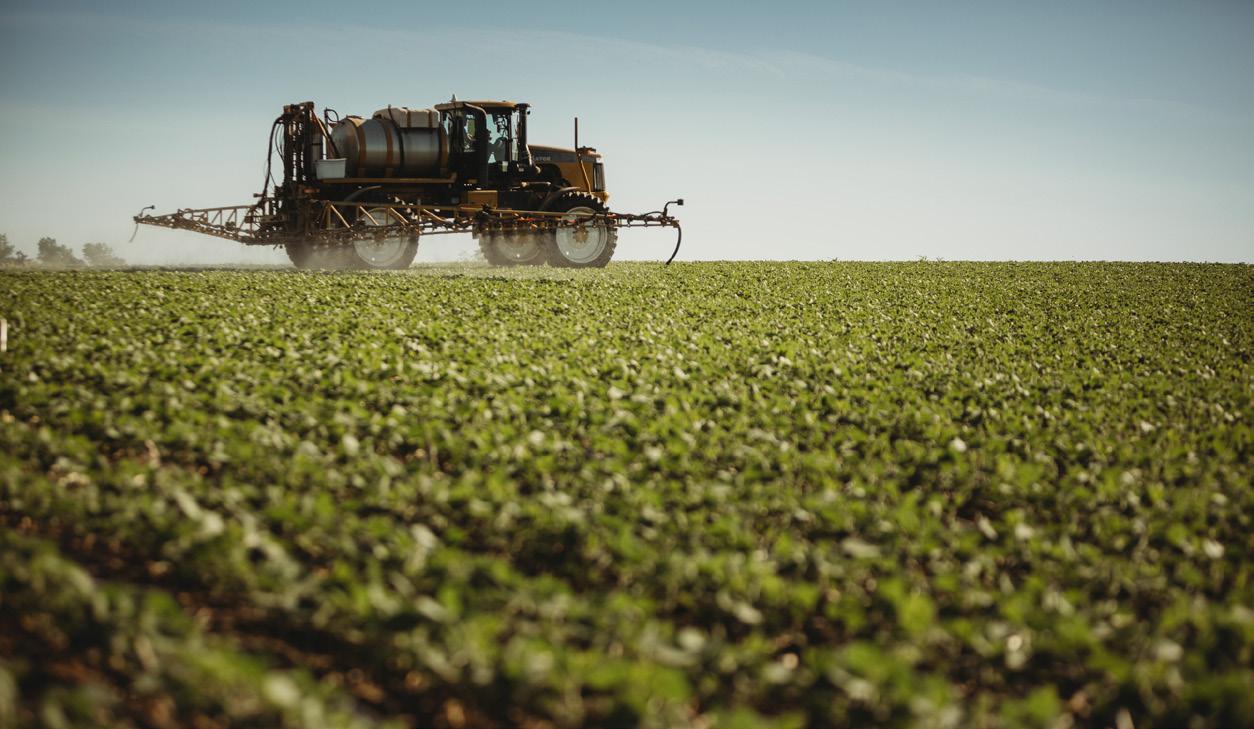
3 minute read
Resisting Regulations
Concerns grow as the EPA proposes burdensome restrictions for U.S. farms

Across Illinois, farmers' concern is increasing regarding actions taken by the Environmental Protection Agency (EPA) to become compliant with the Endangered Species Act (ESA). This summer, the EPA released the proposed Herbicides Strategy which, if enacted, would create new and burdensome regulations, for on-farm herbicide use. The core concept of the Herbicide Strategy is that farmers would attain “points” by adopting specific practices (reduced tillage, cover crops, vegetative filter strips, contour farming, etc.). Use of most herbicides would require a set number of “points” per field - most herbicides could require 6 or more points to use. As a result, Illinois Soybean Growers (ISG) anticipates that farmers would have to adopt multiple practices in each field, creating a situation for some Illinois farmers where they are unable to comply with the proposal, effectively making the land unfarmable. In almost all cases, the proposal would impose significant costs on farm operations.
The proposed strategy and supporting documents are extensive, comprising over 500 pages of rules and regulations, making it incredibly complex and difficult for individual producers and applicators to determine if fields are under regulation or understand their compliance obligations. Currently, ISG is most concerned about new policy on fields with subsurface drainage (tile drainage), which would require construction of wetlands/retention ponds to prevent all drainage (water) from flowing off site. With the complications of nearly 10 million acres of tile drainage in Illinois, this regulation alone would create an unworkable situation for many Illinois farmers. ISG is working hard to communicate the unreasonableness of this requirement to the EPA and propose alternative solutions. However, the proposed Herbicide Strategy also contains many more issues Illinois farmers should be concerned about.
Some examples are:
Criminal Penalties
The EPA’s proposed plan could make farmers susceptible to civil and criminal penalties for violating proposed ESA regulations, putting additional and unnecessary burden on farmers.
Surveillance State
Worse yet, since violations would fall under ESA, there is the potential for individuals to be rewarded for reporting farmers. This would create a scenario where there is a financial incentive for the surveillance of farm operations by activists, thus exposing farmers to the potential for false accusations that may be difficult to defend.
Pesticide Exclusion Zones
The EPA is splitting much of the country into Pesticide Use Limitation Areas (PULAs) based on loosely defined and identified habitats. Many Illinois farm fields fall into two of these PULA areas. While new regulations will apply nationwide, farmland in the PULAs will have additional requirements for farmers, making compliance even more difficult and, in some cases, effectively creating pesticide exclusion zones.
Larger Drift Buffers
The EPA is changing rules around aerial and ground spraying of herbicides. Potentially increasing downwind spray-drift buffers of up to 500 feet for aerial applications and 200 feet for ground applications for fields near ESA habitats.
ISG is taking steps to protect Illinois farmers from these worrying regulations. This includes educating the EPA and our congressional offices about the undue burden the proposed strategy would place on our farmers, as well as coordinating outreach and advocacy efforts with other state and national farmer organizations. Finally, we are working hard to organize our farmers to resist these unfair regulations before they are finalized. The EPA has said they plan to implement a final Herbicide Strategy by 2024, making this a rapidly evolving situation. Please watch for additional outreach on this issue in the coming weeks and months.
Feel free to contact us at govrelations@ilsoy.org for more information.










